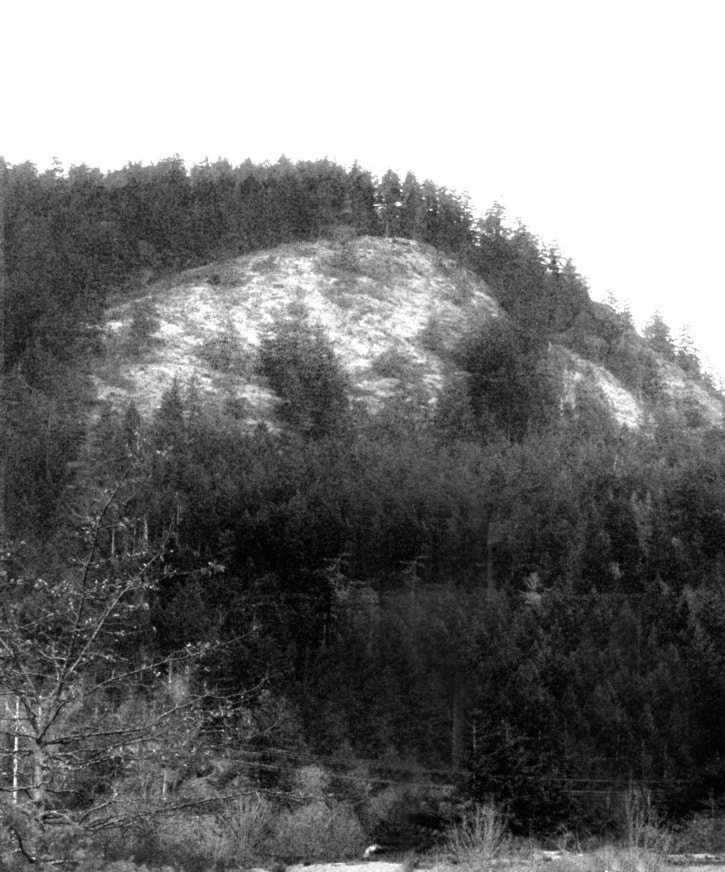Rising now as a sentinel towering on the northwestern landscape, or in early summertime, attracting the rays of the sun as the brilliant yellow blossoms of scotch broom creep across the rock face - there stands Mount Brulé.
Each day that we drive eastward across the river from downtown Sooke we see this rock face (pictured above), but how many know how it got its name? Jean Baptiste Brulé was born in Montreal and travelled westward as a voyageur with the Hudson’s Bay Company, arriving at Fort Vancouver on the Columbia River.
In 1838 Brulé, a French Canadian, married Marguerite, a T’Sou-ke native who was living in that territory at the time. When the Oregon Treaty was enacted in 1846, locating the international boundary at the 49th parallel, a number of men who had been connected to the Hudson’s Bay Company decided to move northward, to stay with the “Crown” rather than with the “Republic.”
Travelling with fellow voyageurs, the group was first drawn to Fort Langley, but by around 1850 the families had migrated to Sooke, no doubt influenced by the desire of Marguerite to rejoin her people at the Sooke River. Among the voyageur group were Kalapuya wives from the Willamette Valley. Settling adjacent to Sooke Reserve No. 1, these families populated the land on the east bank of the Sooke River, towards the region we once knew as East Branch (now Charters River).
Brulé settled himself and Margaret to homestead at today’s Calvert Road, on property that reached up the west slope of the mountain that soon became identified with his name. When the discovery of gold in 1864 attracted hordes of gold seekers to the junction of the Sooke and the Leech, Brulé was in a position to provision the men with beef and mutton.
The Brulé family has left a large legacy within our region, their descendants numbered in many hundreds, mainly through the marriage of Brulé’s stepson’s daughter Ellen to Joseph Poirier, Sr. Brulé Drive on the southwestern approach to the mountain is another reminder of this adventurous pioneer. As well, Brulé family graves lie in seclusion near Calvert Road.
Elida Peers, Historian
Sooke Region Museum
Historical note:
The Lorimer family, prominent pioneer citizens of Sooke and of the Province of BC, have now lost the last of the young family members who grew up here, a part of the Sooke heritage. Growing up at the corner of Gillespie and Sooke Roads, the four Lorimer brothers, George, Malcolm, Duncan and Jimmie all went overseas in the Second World War. George was lost in the war, and a feature along the Galloping Goose Trail is now named for him.
The remaining brothers all went on to distinguished careers; the only girl, Margaret, married Sooke’s Wilf Strong, of the farming family. In 2006 Duncan Lorimer, well-known as the principal of Victoria High and a member of Sooke’s Pipe Band, passed away, and this week his widow, Betty, who in her youth had worked in the Sooke Telephone Office, went to join him.
James, youngest of the brothers, also married a Sooke girl, Cicely Charters, and went on to earn a law degree at UBC. A note from the Honourable Hugh Curtis, a former BC cabinet minister, to the Sooke Region Museum tells us that the Association of Former MLAs is marking the passing of one of their own, by a donation in memory of the Honourable James Lorimer, Minister of Municipal affairs in the NDP government of Premier David Barrett.
